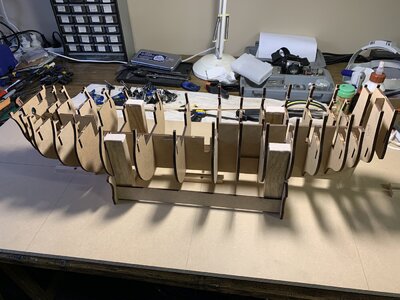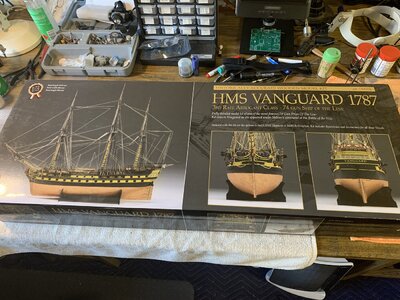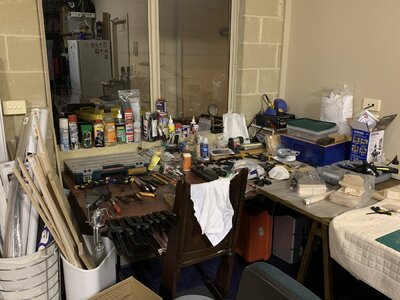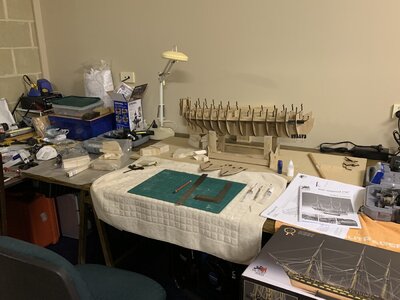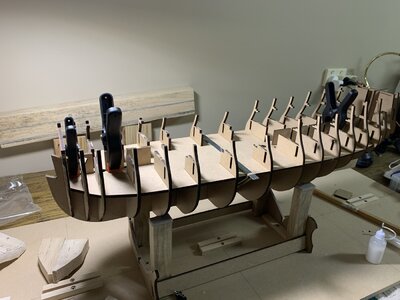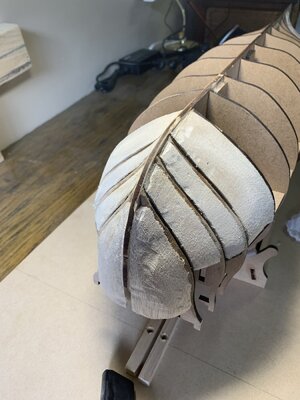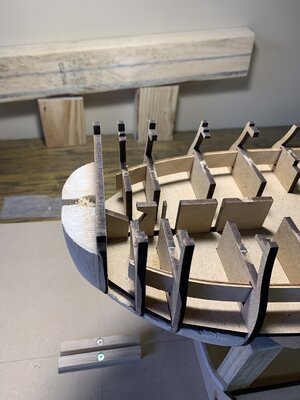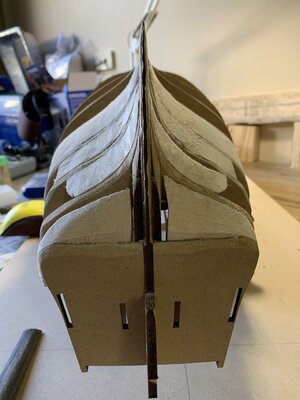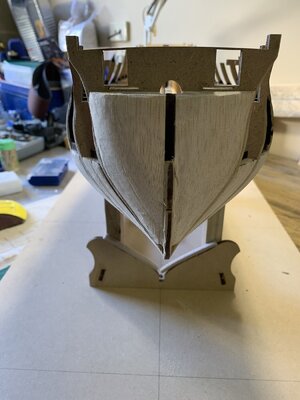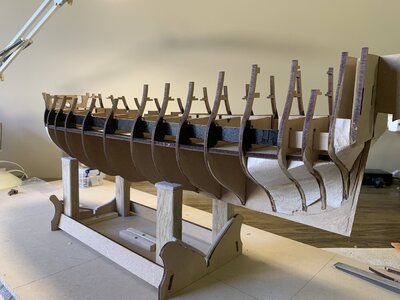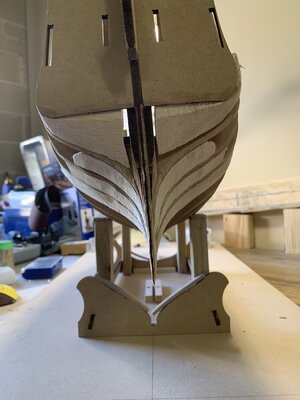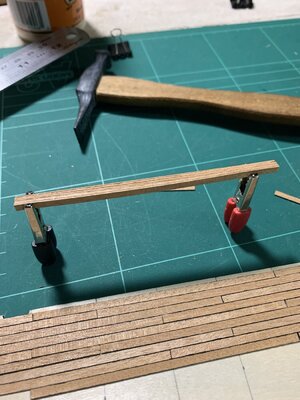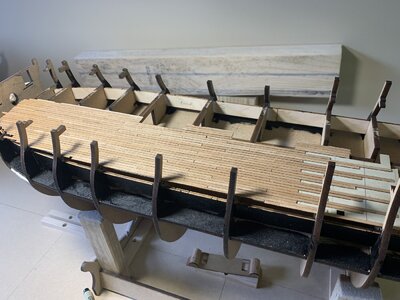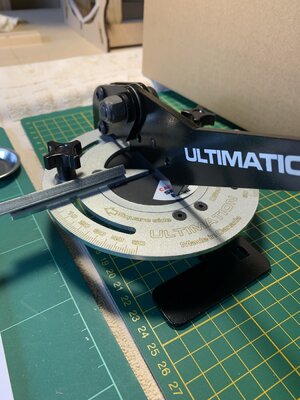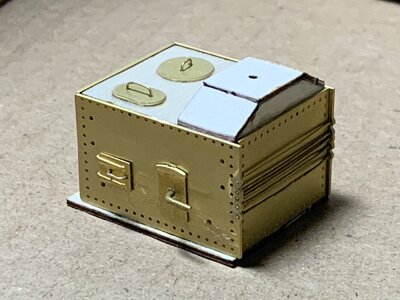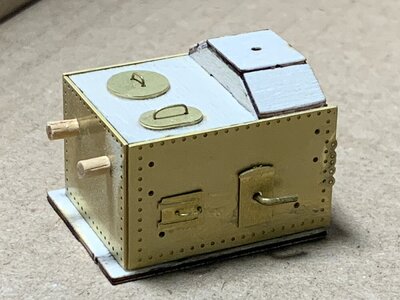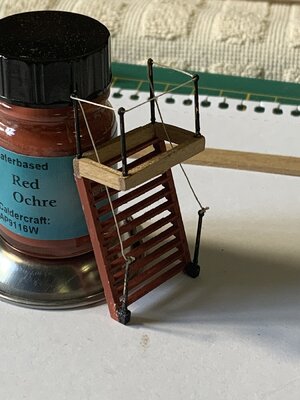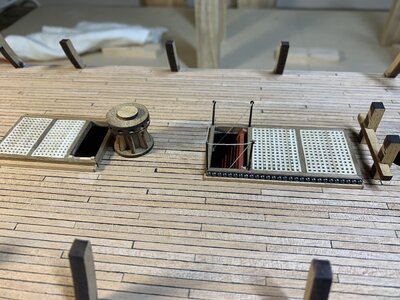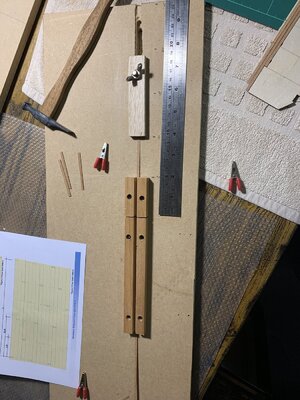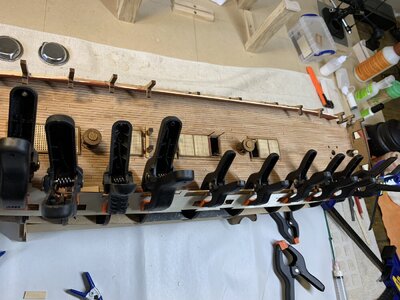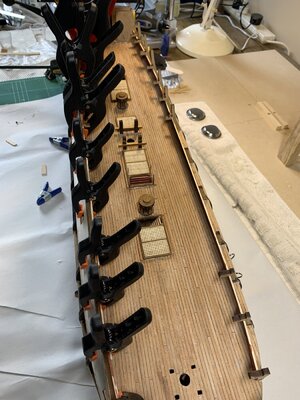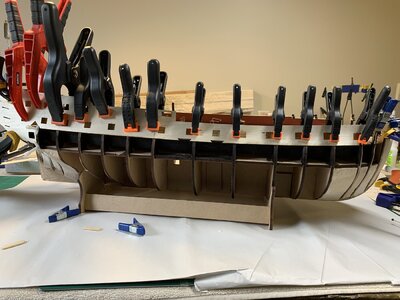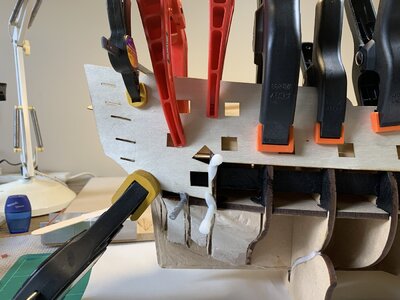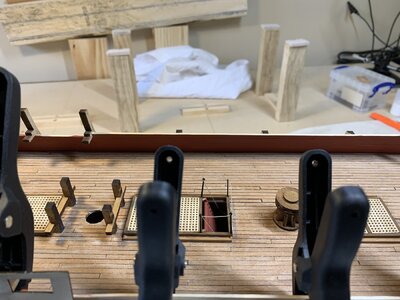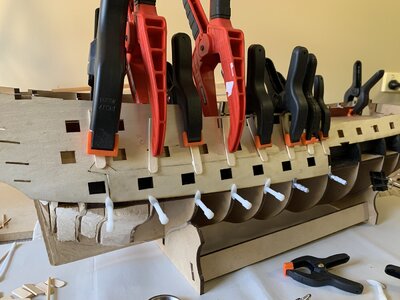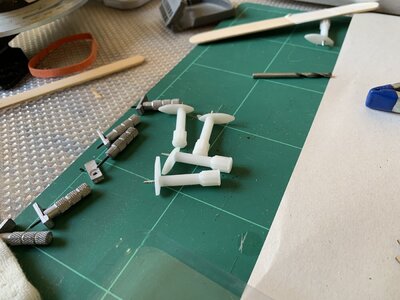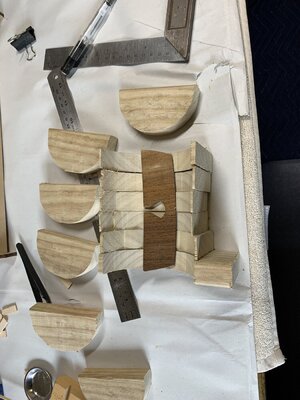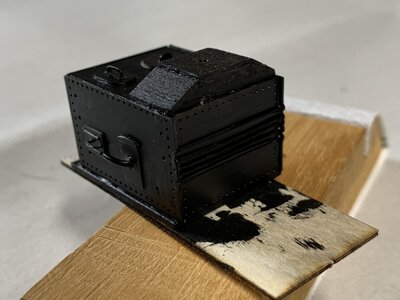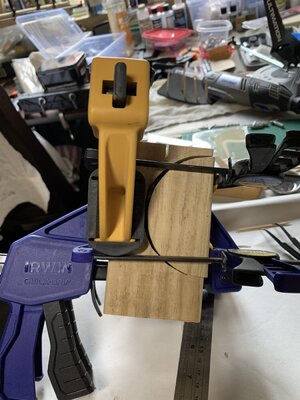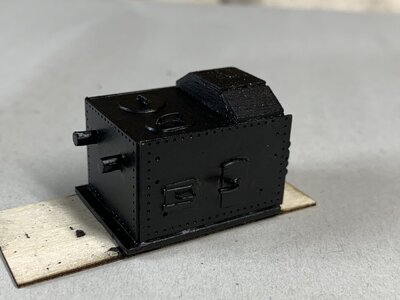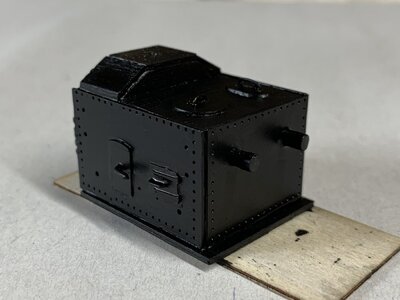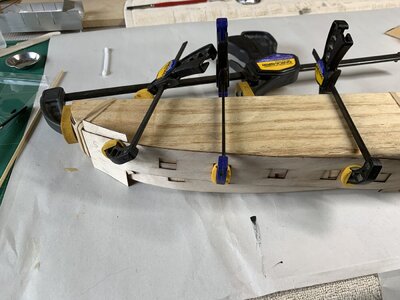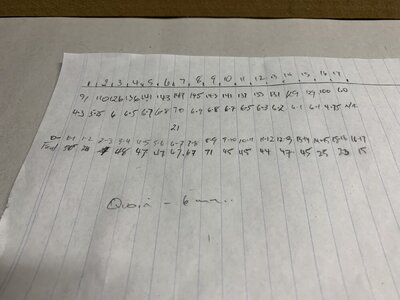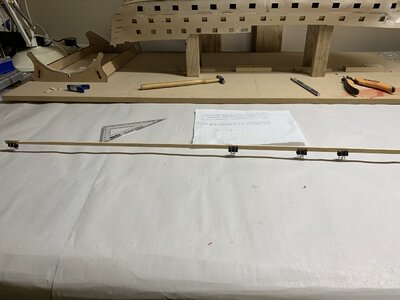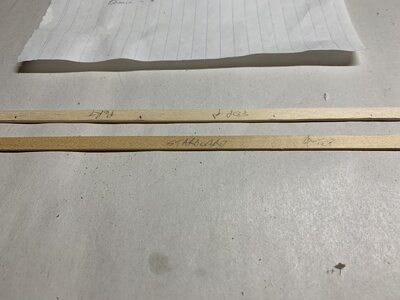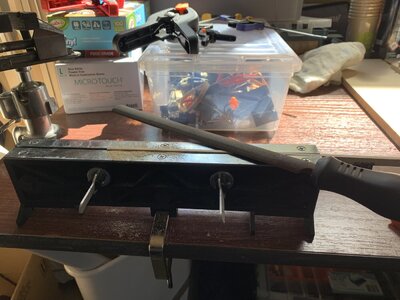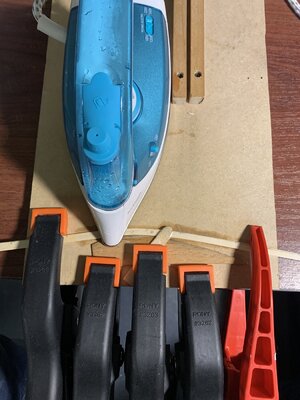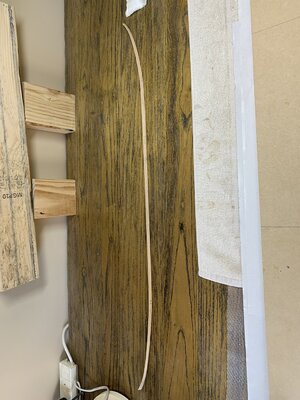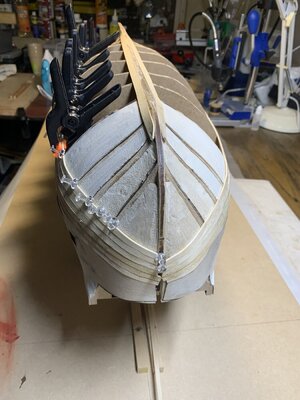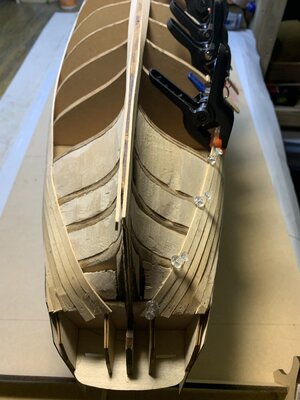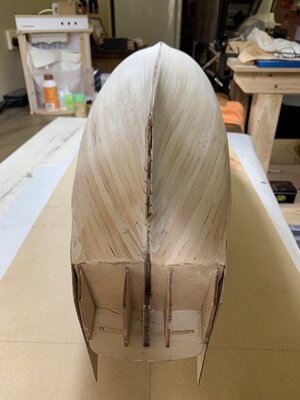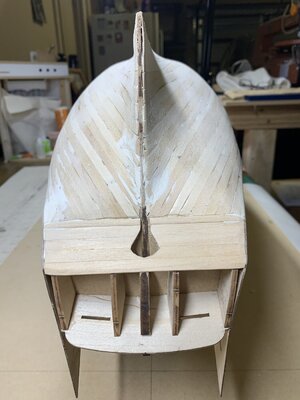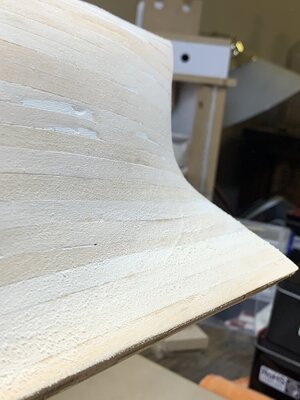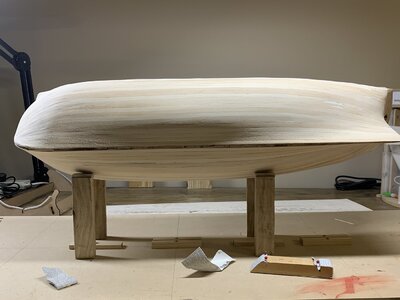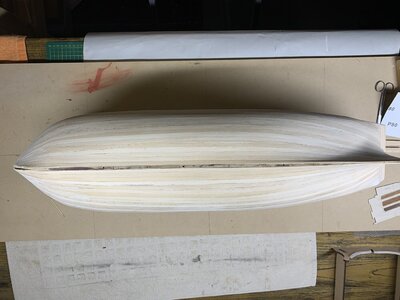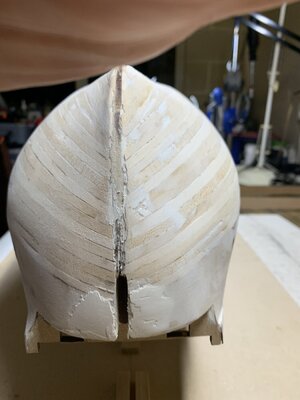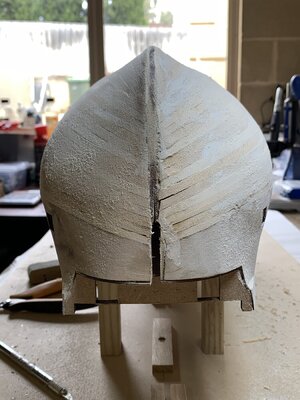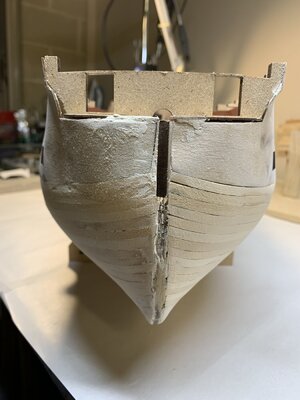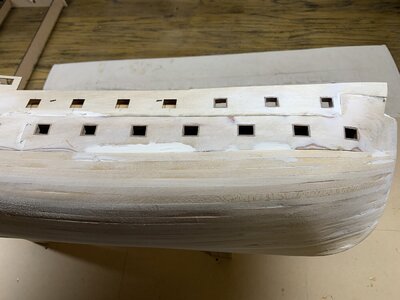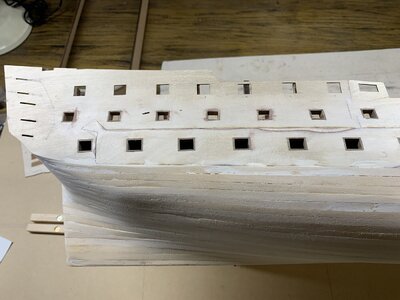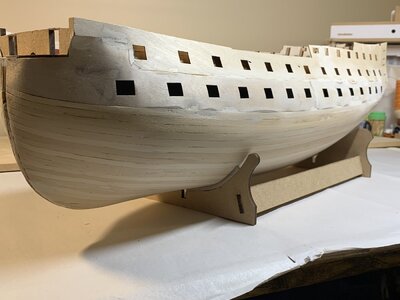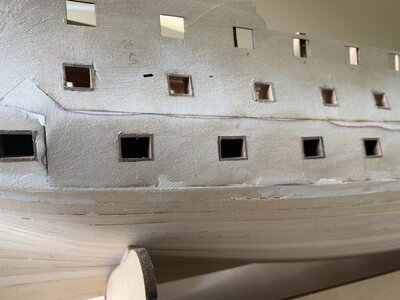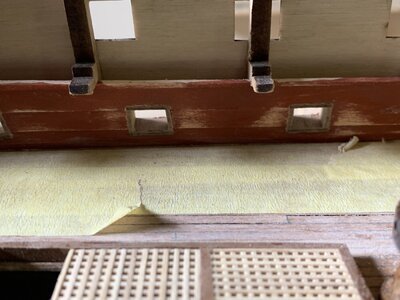i have been making slow progress. Trying hard to get a nice build and reading others logs before I do anything.
Anyway since last post I have
1: Planked inner bulwark of gun deck, painted with Red Ochre
2: Sanded the deck and sealed it with matt polyurethane
3: Painted the Beak Veneer with Officers Loos.
4: Painted the Oven
5: Trial painted the guns
6: Placed 6 of the gun port patterns.
My thoughts so far. Painting the inner bulwark patterns is easier to do off the boat, and I like the airbrush better as I can get a more even thin coat, which shows the detail in the wood but looks consistent in the finish.
Painting general tips as I am a real beginne, I have learnt that all surfaces wood, metal, or plastic need cleaning & priming or preparation before applying paint.
For wood I use decoart Americana all purpose
sealer
For brass and bronze I use SMS etch primer
For Polyurethane I used Feast Watson Matt Polyurethane Varnish
I am using Admiralty paints water based by Caldercraft.
Gun port patterns. the upper two are not all the difficult to apply. I used PVA wood glue and had a clamp for each frame, used a paddle pop stick on the painted bulwark to prevent any damage from the clamp, and used spring clamps with tilting tips to ensure the 1mm plywood was compressed at the greatest concave part. For the Bow and stern ends there are some other curves that were best held with the thumb screws. I have plastic and metal types. The Mdf is solid so need to predrill some pilot holes for the screws.
The Bow lower patterns have the most difficult curves and I haven’t fitted them yet. I soaked in hot water for 30 minutes and having made a wooden frame jig from the plans outline using a scroll saw on a 4 by 2 scrap, I clamped the wet plywood with clamps and rubber bands to dry.
Also made a form jig to compress the walnut transom, Part 31, which other modellers have noted is notoriously hard to bend, against the grain.
Thanks for checking in and I would be happy to have any comments or suggestion.
View attachment 331785View attachment 331786View attachment 331787View attachment 331788View attachment 331789View attachment 331790View attachment 331791View attachment 331792View attachment 331793View attachment 331794View attachment 331795View attachment 331796View attachment 331797
